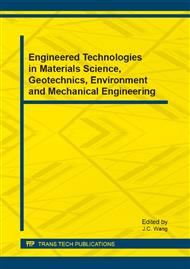p.640
p.644
p.650
p.656
p.660
p.665
p.671
p.676
p.684
Research of “Yes” and “No” Responses by Auditory Stimuli in Human EEG
Abstract:
As an emerging technology, brain-computer interface (BCI) bring us a novel communication channel which translate brain activities into command signals for devices like computer, prosthesis, robots, and so forth. The aim of the brain-computer interface research is to improve the quality life of patients who are suffering from server neuromuscular disease. This paper focus on analyzing the different characteristics of the brainwaves when a subject responses “yes” or “no” to auditory stimulation questions. The experiment using auditory stimuli of form of asking questions is adopted. The extraction of the feature adopted the method of common spatial patterns(CSP) and the classification used support vector machine (SVM) . The classification accuracy of "yes" and "no" answers achieves 80.2%. The experiment result shows the feasibility and effectiveness of this solution and provides a basis for advanced research .
Info:
Periodical:
Pages:
660-664
Citation:
Online since:
February 2013
Authors:
Keywords:
Price:
Сopyright:
© 2013 Trans Tech Publications Ltd. All Rights Reserved
Share:
Citation:


